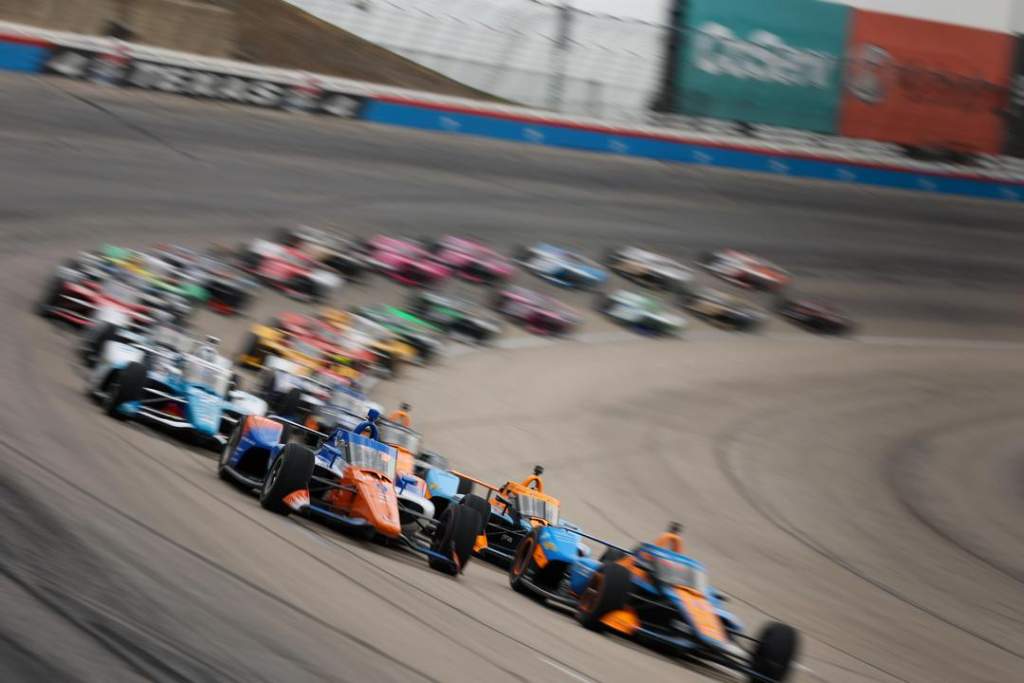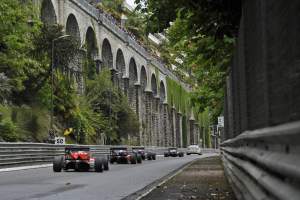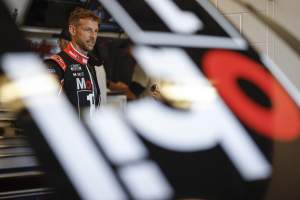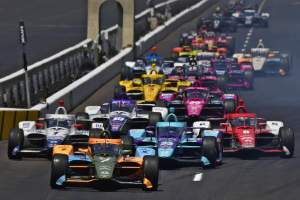If you watched one of the best races you’ll see in motor racing this year – last weekend’s IndyCar race at the Texas Motor Speedway – you might be wondering why people are surprised or have been complaining about the place for years.
A resurfacing in 2017 set about a chain of events where a traction compound called PJ1 was added to give NASCAR Cup cars more grip but, for IndyCar, you can go ahead and exchange ‘PJ1’ for ‘permanent ice’. It was so slippery that it’s taken years for IndyCar to rebound through continuous car development and changes.
Last year was a breakthrough as a combination of new aero parts and a new practice session to rubber-in the higher line of the track at least made passing in the second lane possible even if you couldn’t stay up there for extended periods.
And Texas took another step forward this year. Another three aero parts offered 200lbs (90kg) of clean downforce that didn’t give the cars a dirty wake. And the return of the NASCAR Truck Series for the first time since the pandemic rubbered in the track even more.
Last November NASCAR did not apply more PJ1 as in previous years either and a different resin was used which helped. NASCAR has had a similar struggle to IndyCar with reduced fan attendance and difficulty in creating two-wide racing.
Finally, the special rubbering-in practice initiated by Will Power last year but undertaken by seven cars was run by the whole field and policed; the drivers knew using this session as an extra practice for themselves would not be tolerated.
It made for an entertaining race as, even though Pato O’Ward and Josef Newgarden dominated and lapped the whole field at one point, passing was frequent. There were 439 overtakes for position according to IndyCar, a staggering number for a 250-lap race.
Some will argue that there was a significant amount of luck involved to make the race this good. The fact that Newgarden and O’Ward lapped the field meant they and the small number of cars unlapped at each late caution could pit for tyres, making the racing at the end an all-out blitz to the finish with no tyre or fuel saving necessary for the leaders. A sort of perfect storm at the end of the race.
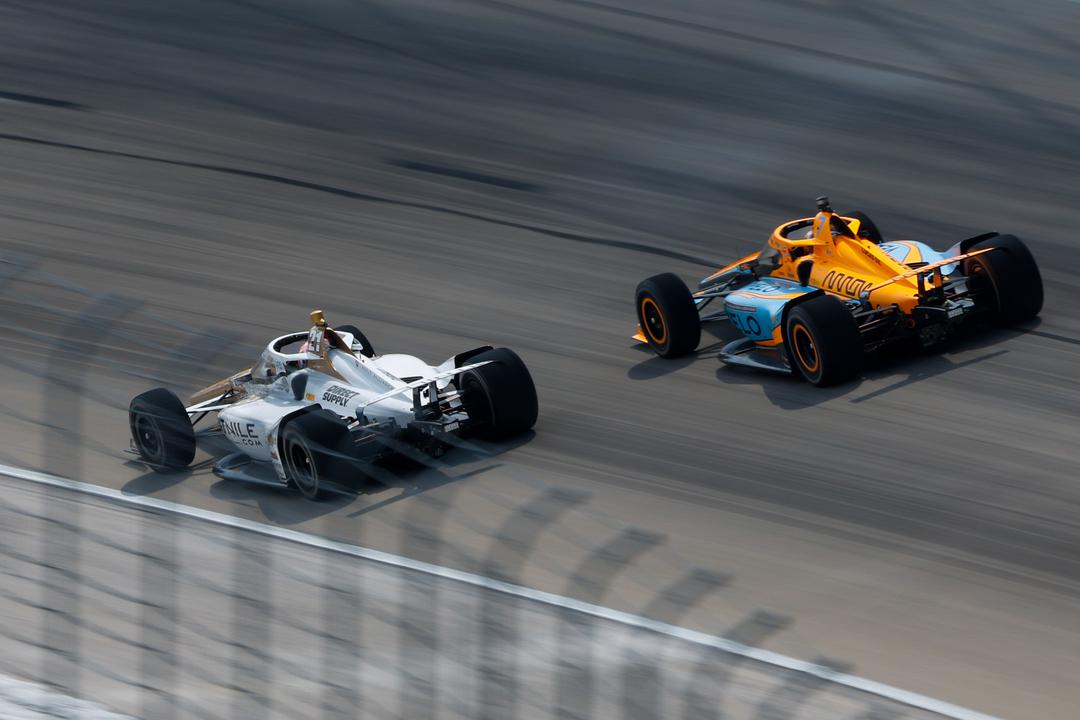
The relatively cool conditions contributed too. The Race IndyCar Podcast co-host JR Hildebrand certainly appeared to be of the opinion that a large amount of luck was needed along with the changes to mark a significant improvement.
But you could make the same argument for many other races on the schedule and rather than focus on the luck, after so many average races at the venue I think on this occasion it’s better to laud the work that has gone in across the series, drivers and venue to create a scenario that, even with some fortune, made a race like this.
Whether it translates to more bums on seats is another and probably more hypothetical question about the future of ovals and race events as a whole.
Any time you ask for listeners’ or readers’ questions, one of things that comes up is ‘IndyCar needs more ovals’.
In an ideal world that would be true, but they are difficult to organise affairs that have to take place away from major cities.
Many use CART’s Formula 1-rivalling glory days as a measure of what oval attendance success should look like, but in those days sponsors would give away thousands of tickets to associates and fans, even if core attendance was higher.
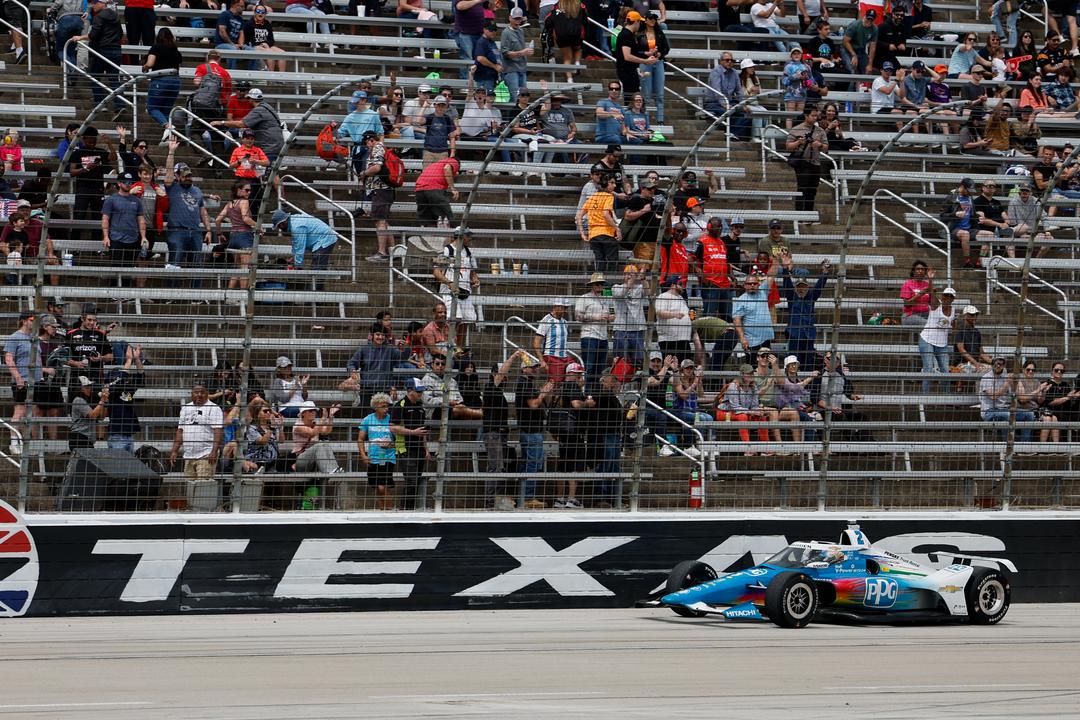
And don’t forget, it’s much easier to spot poorly attended races on TV when the fans are packed into a single grandstand like at Texas, whereas wide, spread out venues like Mid-Ohio or Road America never really have to answer questions over attendances. The fans are spread out around the track.
It’s really important when considering this subject to remember the realities of 2023 alongside the enthusiasm for more exciting oval racing – there’s no event sponsor paying tobacco money in IndyCar in 2023 as there was before.
Penske Entertainment, IndyCar’s owner, had plenty of soul-searching to do with the Texas promoter Speedway Motorsports to discover how to reinvigorate the race.
“When we started talking to Speedway Motorsports they were of the same opinion that we all agreed that we need to lean in together to make this thing back to what it was back in the 1990s when the crowds were packed in and it was a real spectacle,” says Michael Montri, of Penske Promoter Relations, who also has significant roles in the Detroit and Iowa events.
“We knew it was going to take some time, we knew we couldn’t get it back to what it was overnight.
“I think we’ve taken a really good step this year. We’ve made a big effort on the marketing side, on the sponsorship side, on the promotion and advertising, on all the aspects of the event.
“I think what you see and hear today is a result of everybody pitching in and really trying to do something with it.”
It was a breathtaking watch from the race track. I’d always dreamed of visiting Texas as a child watching NASCAR on TV, and of course many of the IndyCar epics of the pre-2017 era including Graham Rahal’s spectacular 2016 victory.
There’s a real sense of community at the track among those who work there and the track layout itself is bonkers too. The number of different lines drivers can take into Turn 1 alone, and just the sheer ferocity of the banking is just so much more spectacular and complicated on the eye than it appears on TV.
It’s comparable to seeing the Corkscrew or Paddock Hill Bend for the first time. You almost have to consider if it’s the same corner you saw on TV because the reality is just that more spectacular and makes you wonder why the attendance isn’t astronomical.
We don’t have attendance numbers from last Sunday yet but examining pictures of the last two years suggests the crowd was up, especially looking at the Turn 1 grandstand which isn’t often pictured.
The hometown crowd. 🧡🤩 pic.twitter.com/SC1l0pTPj3
— Arrow McLaren IndyCar Team (@ArrowMcLaren) April 3, 2023
Part of this was down to the efforts Montri describes, but Pato O’Ward deserves a lot of credit too. He gave away 600 tickets from merchandise purchases on his website as the event is the closest thing the Mexican has to a home event. People from neighbouring cities and states joined a host of Mexicans that created a huge group of fans wearing McLaren papaya-coloured shirts and Mexican flags.
If IndyCar isn’t going to make the jump and hold a race in Mexico to piggyback off O’Ward’s personality, it should look at what O’Ward was able to do with tickets and garage tours at Texas and double down on that in 2024. Bring the Mexican race to Texas and make O’Ward the star. He and his McLaren team have the pulling power.
A massive increase in attendance is not likely to happen overnight; it takes time. IndyCar can draw some inspiration from F1 at the Circuit of the Americas based in Austin, which has had a fluctuating crowd especially low by its standards back in 2014/15 but is now selling over 400,000 tickets for a race weekend. Even 5% of that would be a success for IndyCar at Texas.
Like many other events in IndyCar, oval or not, promotion is the key. IndyCar may be a national championship but it relies on a network of promoters to cover the 3000 miles between its most easterly race in St Petersburg and its most westerly in Portland.
Making sure those promoters consistently reach a certain standard is absolutely vital to maintaining your brand continuity. You shouldn’t go to one place and get one of the best atmospheres you’ve ever seen for a motor race thanks to enormous investment in local advertising among other things, and then head to another and not know in the surrounding area a race is even happening.
Those polar opposites are usually down to the amount of money and effort an event can put into promotion.
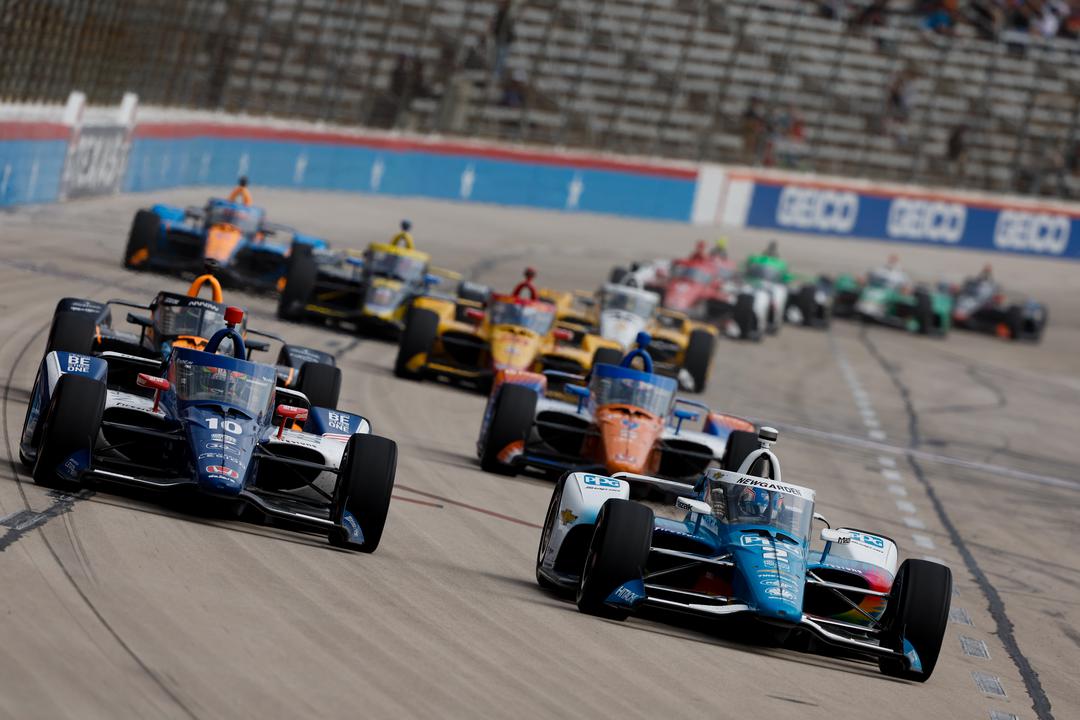
There’s no secret Roger Penske is an oval lover and he and his company want to see this race succeed.
“We had a really good race last year and it was a seed of a start,” says Montri. “Like, we have the on-track right, or at least it was better than it was in previous years. So it really started with that, we’re really confident we’ll have a show on the track.
“Then, let’s go out to the local folks. Get Pato involved to speak to the Hispanic market here, the Dallas/Fort Worth area, that’s where we leaned in a little bit on the marketing side as well.
“We worked very closely with their marketing here at the speedway, tied digital efforts together between IndyCar and the promoter to really reach all the folks we could get. That’s where we started. We’ll see where we can get, as things happen.
“The effort was much better on both sides and we really feel like we’re building this thing for the long term.”
So where does the event go from here?
It must keep up the efforts Montri has described to get a grasp on having a core attendance from the local area.
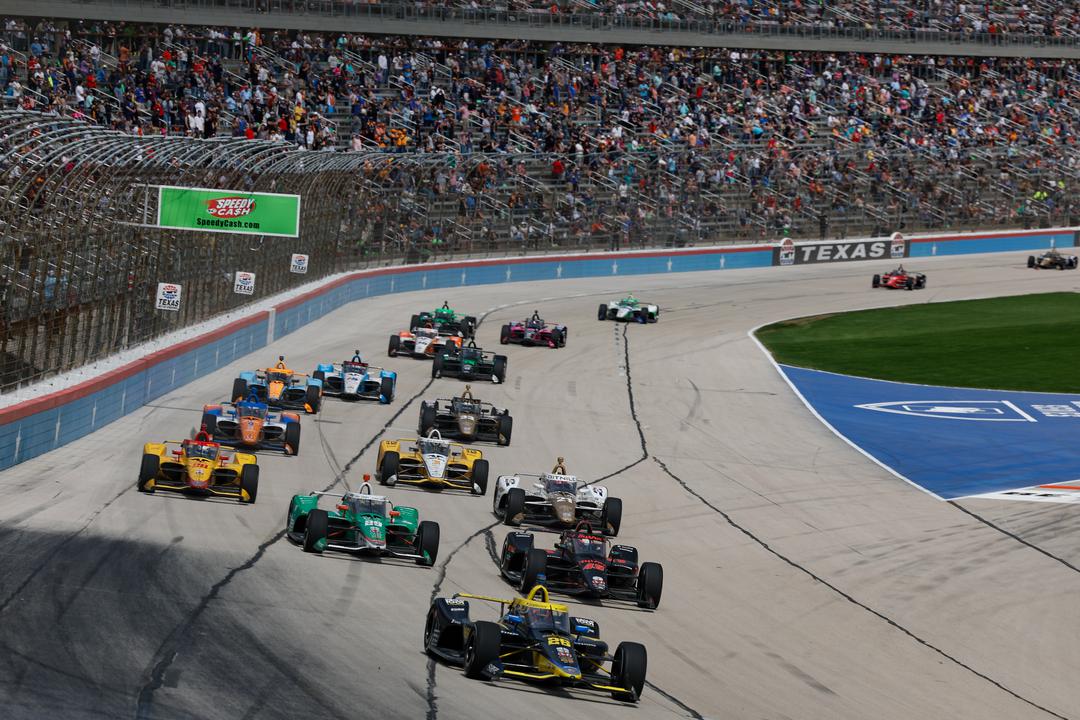
It should also be looking at expanding the schedule. Every race series you have creates additional scheduling headaches, but you’ve got to give fans things to watch and Saturday is the only full day of on-track action as Sunday’s IndyCar activities were done by about 3pm local.
Heavy storms and tornados in the area likely did nothing for helping people make the decision whether to turn out, too.
It also has to go back and work on the on-track element. I’m sure Roger Penske will be lobbying NASCAR – which he also competes in – not to add PJ1 at the end of the year.
IndyCar fans should be praying for NASCAR’s new Next Gen car to have a good first untroubled race at the venue towards the end of the year to avoid the need for any stock car meddling. Having almost perfected the current formula, it would no doubt be a huge setback to pull the rug from underneath IndyCar.
Keeping the balance the same as 2023 will be important as well. It gave the teams that excelled on their set-up – particularly Penske and Arrow McLaren – the chance to shine.
It shouldn’t be easy for everyone to be up front in a pack, that detracts from the skill needed to race on an oval. It’s also much more dangerous to have most of the field racing five-wide, so occasionally three-wide and frequently two-wide is a really nice safety compromise.
Of course, Newgarden won the race so he’s biased, but he explained the situation really nicely.
“I just want to see Texas race the way it should race,” he said. “I think most people would look and say that’s how Texas should race.
“You look at the past, it’s even been taken up a notch from that. Three-wide the entire time. I wouldn’t want to see that. I think you can go too far nowadays.
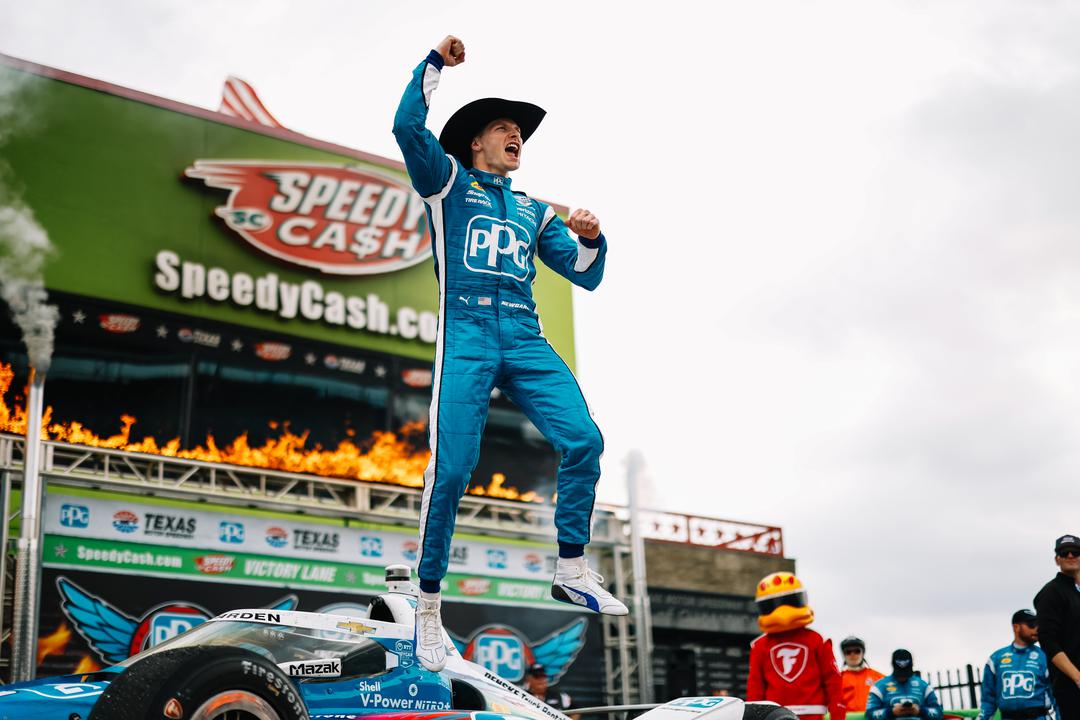
“I really like high tire deg. I like when people come and go and you’ve got to work your advantage. You’ve really got to work to try to keep the car underneath you.
“We’re kind of a step above where I like to see the cars at. I know from an entertainment standpoint this had to be significantly better than last year. It just had to be. It felt packed up for most of the race and definitely at the end.
“Where we go from here, it’s hard to say. Old Texas is hard to beat. The configuration was great.
“The track surface was better for us, we could run all three lanes. I’d like to see that back, then we can start peeling downforce off the cars. If you go and try and find that again, we might not get it right.”
The thing I’d love to see is a pre-Texas test attended by all the teams. The drivers and teams get to run on track but have to work with IndyCar to experiment with parts and configurations so that when the circus turns up in Texas it knows – short of the test likely being cooler – that the product they turn up with is good.
There was a whole month between St Pete and Texas, there was certainly time for it!
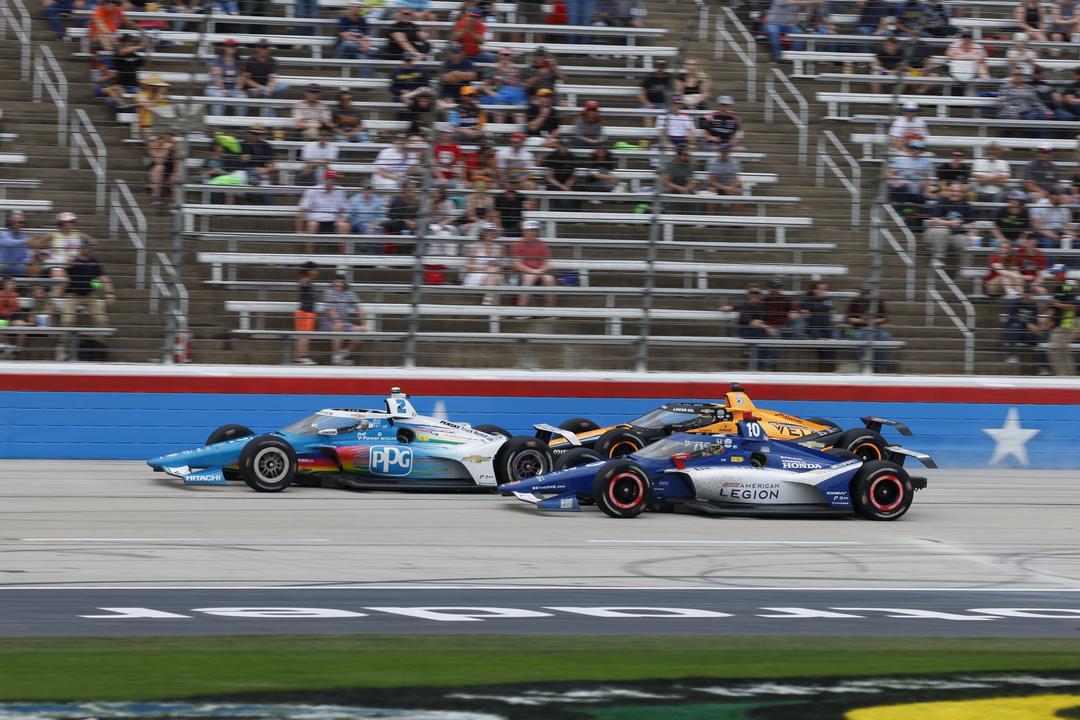
But I’m dreaming at this point sadly, just when I dream of a joint NASCAR Cup/IndyCar weekend which would be absolutely perfect for rubbering in the track, drawing the sort of sized crowd you expect at Texas, keeping the weekend condensed as NASCAR doesn’t need a lot of track time and IndyCar could get its weekend done on Friday and Saturday, which the Texas schedule proves could be done and which is what happens at the joint Indianapolis weekend.
That would be the best outcome, even though it’s unlikely to happen and I’m sure comes with a certain number of downsides.
Anyway, Penske Entertainment has certainly made protecting existing ovals and encouraging more onto the schedule a key part of its future. To do that, it doesn’t appear there is any other answer than to invest heavily, although the Iowa event has shown that bringing the right sponsor onboard – Hyvee in its case – can move the goalposts overnight.
There’s something innate about IndyCar and ovals, so it’s no surprise this topic brings so much passion and desire whenever it is raised.
“Our series was founded on an oval, a big oval!” Montri adds.
“So it’s literally named after a big oval, we want to be on big ovals, these cars are special on big ovals, they go incredibly fast and it’s an exciting show.”
Sunday definitely provided an exciting show.
Now to ensure that the momentum Texas has been building – after recovering from a tricky time where the track’s management structure has changed and its resurfacing proved so problematic – isn’t for nothing.



